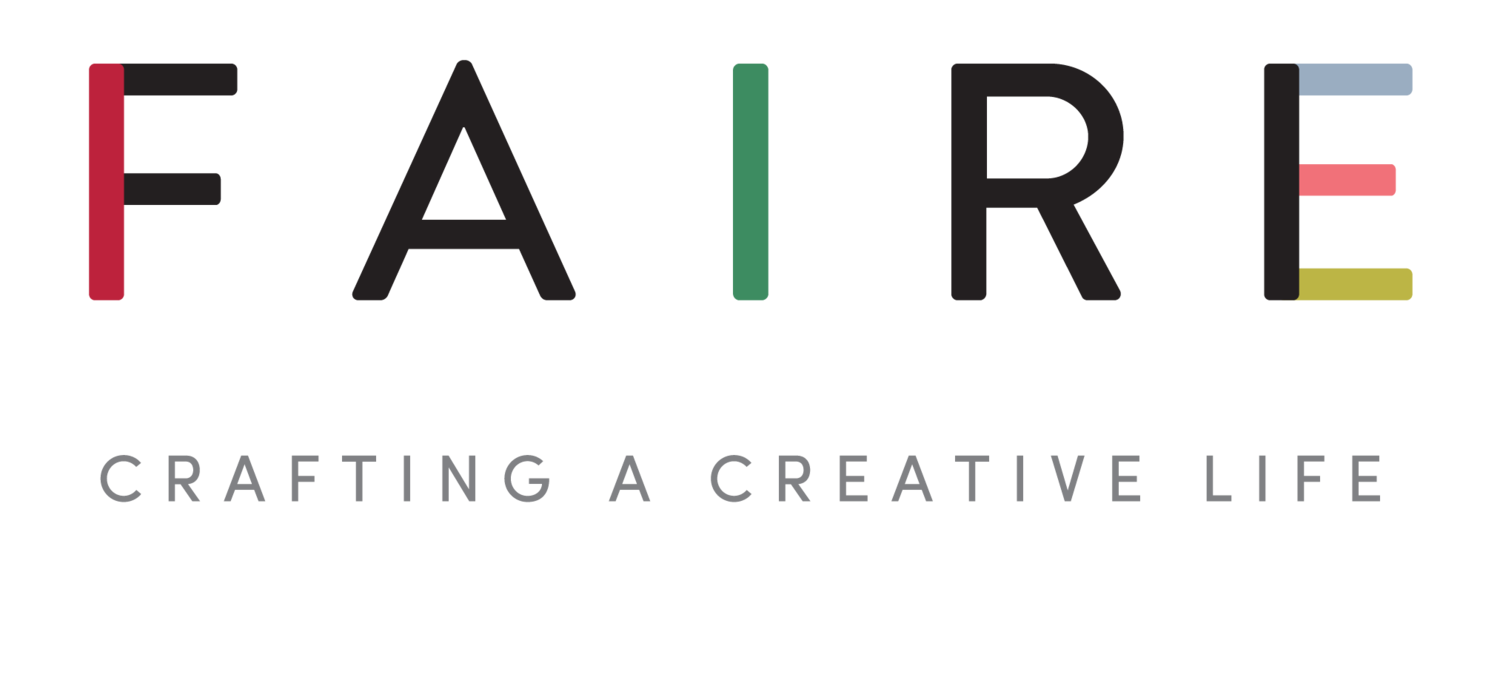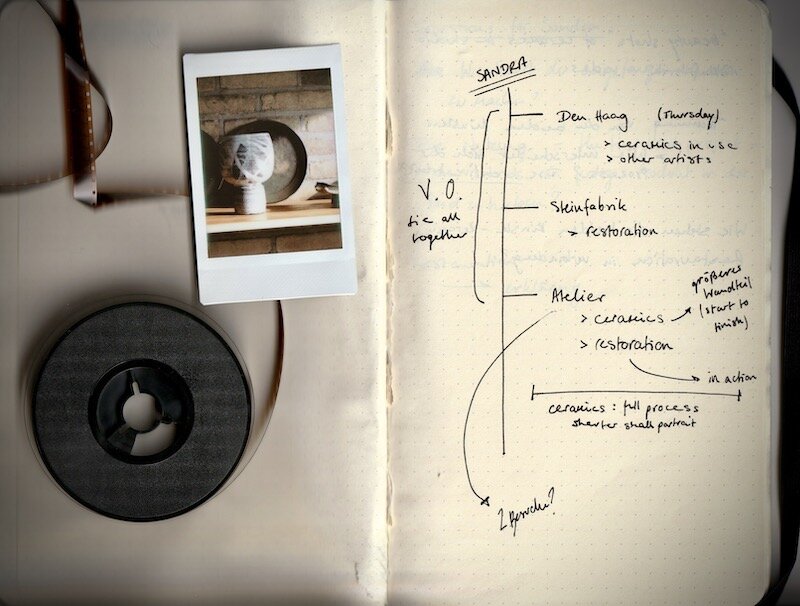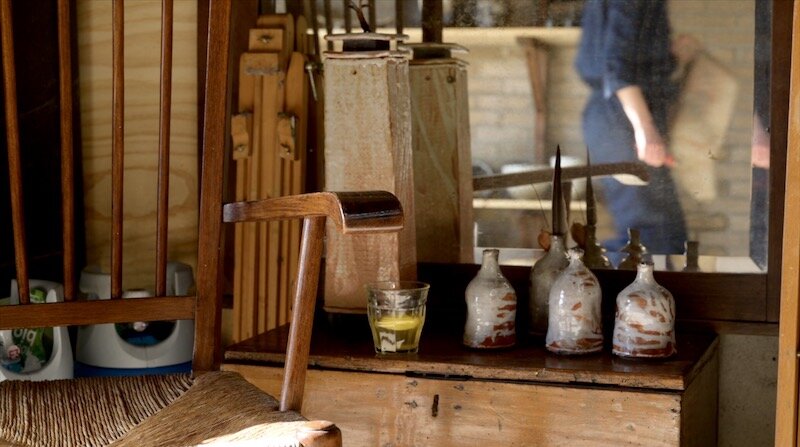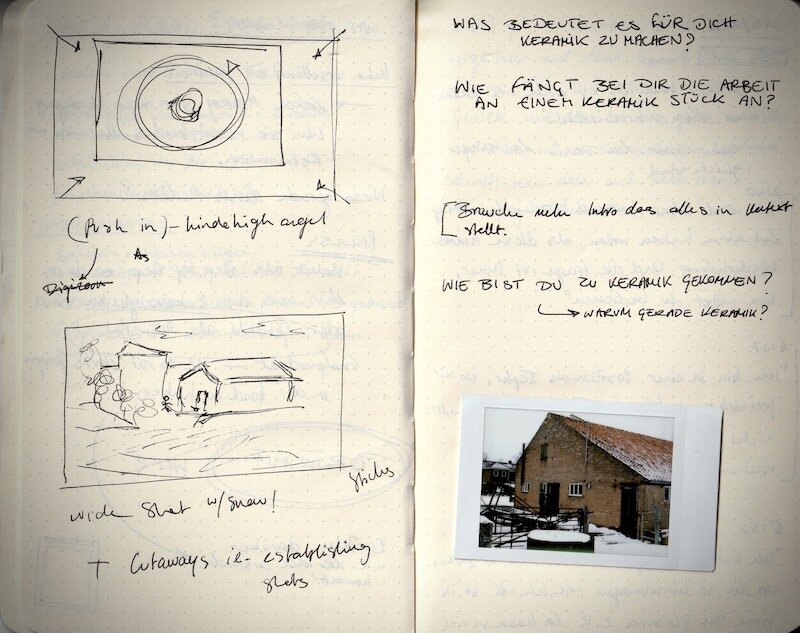The Versatility of the Creative Process
In this behind the scenes article, filmmaker Emily Macrander delves into her experience of filming and producing a video journal of ceramicist, Sandra Van Riet. With the same delicacy as her film, Emily skillfully delineates the fundamental relationship between the philosophical and material in creative expression. We are thrilled to share Emily’s insightful account of The Versatility of the Creative Process.
Words & Visuals by Emily Macrander
At first, the thought of writing about my creative process seemed strange to me. Rarely, if ever, do I sit back and reflect on my way of working and creating. Capturing things, people, or stories in films is something that I have been doing since an early age and seems like a natural part of my life that has now turned into my work. Yet, there is definitely a deliberate creative process behind my work that I have developed over the years––and still am now!
It’s ironic that I struggle to put into words what I do when that is exactly what I asked Sandra to do in my portrait of her work as a ceramics artist. There seem to be worlds between the craft of pottery and filmmaking and their respective creative processes. Looking back on the making of the film and the result, however, I am surprised at the number of similarities between Sandra’s approach to ceramics and my approach to filmmaking. I think that as a filmmaker you are always looking for the best way to capture something or someone and what this ‘best’ is, depends on your subject. When it came to making this film about Sandra this meant understanding her philosophy and creative process to then attempt to distil this process into a short portrait.
A big part of filmmaking is planning in advance. You often spend hours meticulously storyboarding a scene, shooting tests, doing everything in your power to ensure a smooth running of the actual shoot and avoid falling short of footage in the edit. Planning what I want to shoot is a key part of my pre-production process and having specific shots in mind helps me work efficiently and thoroughly. After each day of shooting at Sandra’s studio, I would watch what I had shot in order to keep in mind the big picture. Nevertheless, what Sandra says about her craft also rings true for filmmaking: you need to be open to the things you can’t control. The happy accidents. And really, these unforeseen moments are what capture the atmosphere that sparks not just Sandra’s but also my own creativity; the light falling just right onto a shelf with Sandra’s beautiful vases or February’s sudden snowfall covering the fields surrounding the ceramics studio in an idyllic white… Catching these little moments on camera means that despite planning in advance, a lot of the decisions I make are intuitive and reactions to the shooting environment and the person in front of the camera.
One of these responses was the decision to use super 8 film stock, something that felt appropriate to present a medium as material as pottery. And so, once I had gained a basic understanding of ceramics and Sandra’s way of working, I decided to come back to her studio with my super 8 camera to also bring different textures to the film. I’d like to say that I chose to shoot on super 8 to incorporate this philosophical idea of the close relation of pottery to the natural origin of its materials that Sandra mentions, seeing analogue film as the origin of filmmaking incorporated into an otherwise digital portrait. But, if I’m being honest, the decision came more from an aesthetic than a philosophical place, and the textuality of the film medium felt appropriate to capture the atmosphere in Sandra’s studio.
My work, however, doesn’t usually centre around ‘real people,’ so to speak, as I mostly work on narrative films or music videos. Of course, these forms still frequently have a character at their centre and require you to tell a story, yet the creative process, especially in pre-production, differs from the documentary-like approach I took with this project. In narrative films the ability to shape a story according to your imagination becomes perhaps the single most important thing and working with a script I have written myself allows me the creative control and freedom that I love about directing. On the other hand, the creative process behind the making of a music video is much more focused on aesthetics. Music is a huge inspiration to any project I work on, but in the case of a music video it is the origin of my creative process and the task is to translate the subject or feeling of the song into visual images.
With all of my work, I often find myself particularly interested in capturing a certain mood and enjoy the challenge of communicating this to the viewer. In my opinion, film is undoubtedly the medium that does this best. As something that brings together image and sound, film offers versatility and creative freedom, allowing me to act intuitively even within an often rigidly planned shooting day. Film is also an art form that gives you a chance to work collaboratively. Whether in front or behind the camera, in collaborating with a range of creative people who always bring a bit of their own vision to a project, your creative process adapts and merges to the people around you.
It is hard to outline exactly what the overarching creative process behind my work is because the only constant seems to be the ever-changing nature of precisely this process. Luckily, no two projects are the same and every film I work on is an opportunity to learn about other people’s artistic abilities as well as my own. As the form of the films I make changes from artist’s portraits over music videos to narrative film, so does my creative process. The versatility of film allows me to capture so many different things in different forms and styles and continually gives me room to rediscover my own creativity.
Emily Macrander is a German-born and London-based director working on short format projects such as music videos, branded content, and internationally acknowledged short films. Her approach to filmmaking blends her knowledge of cinema with an aesthetic focus on mood and feeling. Her award-winning short film ‘Without Warning’ premiered at the BFI in London in July and marks the director’s writing debut.
To find out more about Emily and her work, visit her Instagram and website.









